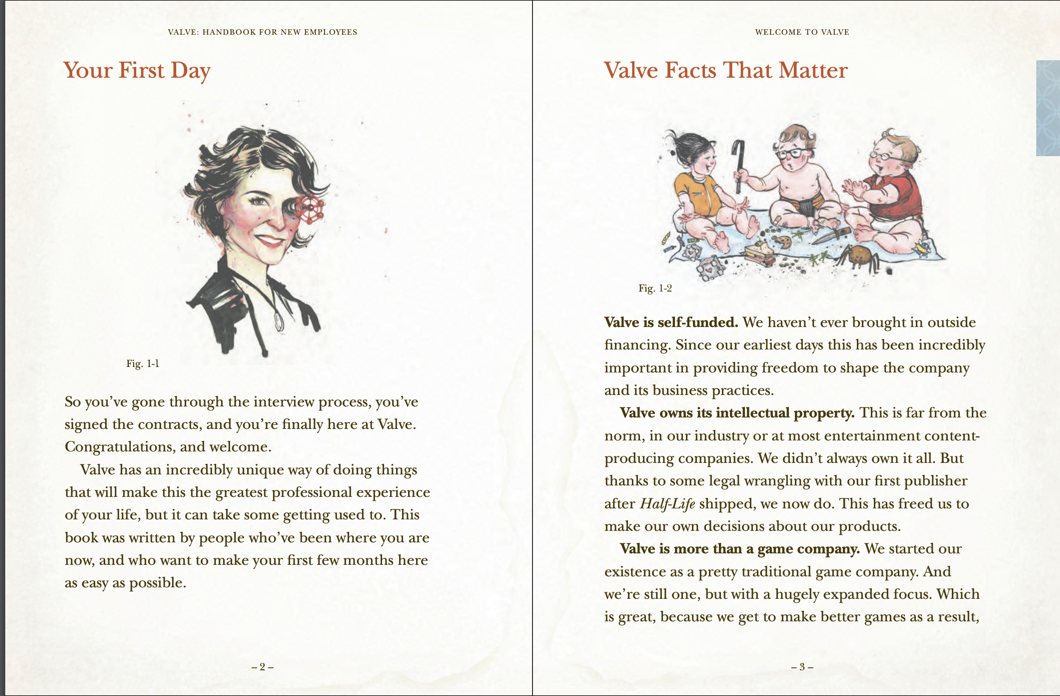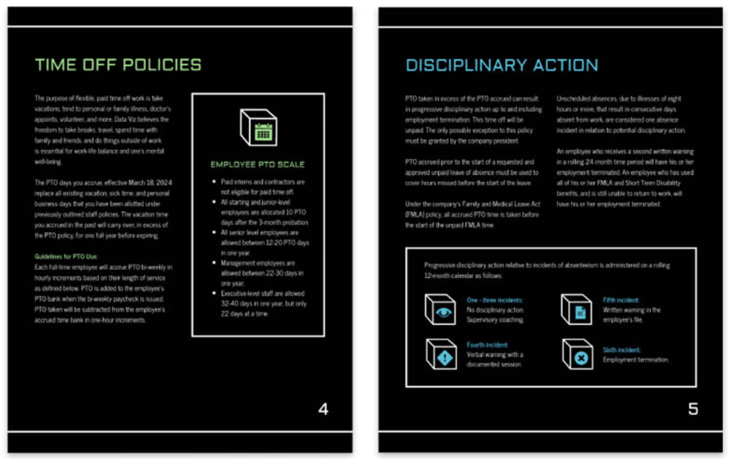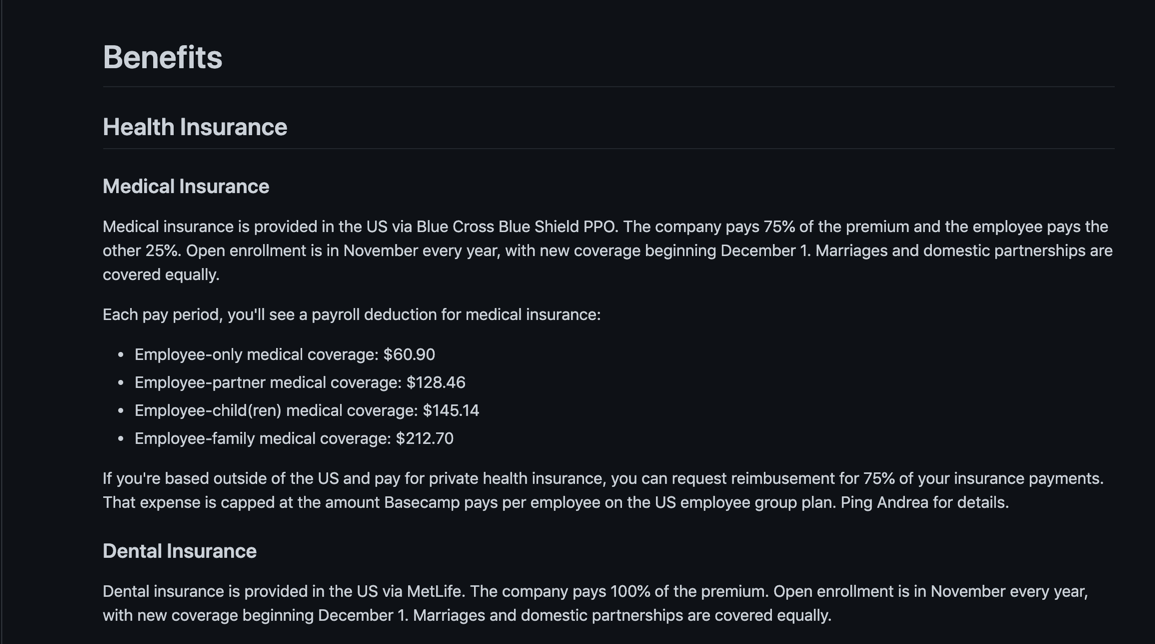
How to Write an Employee Handbook with Examples
How to Write an Employee Handbook with Examples
Category: Standard Operating Procedures
Last updated on Jul 26, 2023
Every aspect of business is aided by operations. For effective operations management, employees require handy documented SOP’s – an employee handbook.
A good employee handbook is the key to unlocking the hidden information that employees require to understand procedures, make quick decisions and save time. Without an employee handbook, employees will struggle to do their jobs properly and standards will fall.
Employee handbooks also pass on company culture and transmit the company’s mission and values to employees.
What is an employee handbook?
An employee handbook can go by several different names, including “culture code” and “company policy manual”. It’s main function is to provide job-related information for employees and is typically shared with a new hire just after they have accepted an offer letter.
Your company manual gives a detailed overview of all your company policies along with other core procedures, employee benefits and guidelines. It sets clear expectations for your employees and outlines the company’s responsibilities with regards to the employee.
Employee handbooks can protect against legal action by clearly stating your legal obligations and defining employee rights.
Many companies see their handbook as a place to share the culture of the company, and introduce employees to their mission and values. They use is to explain how the company works and show employees how they can adapt themselves to the new ways of working.
Why do you need an employee handbook at your organization?
There are many reasons why companies should have an employee handbook.
To provide people with all the safety, environmental and operational information
Your employees need access to a variety of information in order to do their jobs well and maintain a high performance. Your company handbook is the place where they can find safety, environmental and operational information in one centralized location that ensures they are well-equipped to do their jobs.
To provide wide visibility of operational procedures
Your employee handbook makes your operational procedures more transparent, as they are all documented in one place and employees can gain visibility into what other teams and colleagues are doing.
To maintain quality control over processes.
Process documentation makes it easier to assess the work that is being conducted and make improvements. You can maintain quality control of processes by providing guidelines for your team to work from.
To ensure seamless operation and consistency
When your team is working from the same handbook your operations will be more consistent as they are following the same set of instructions. Your employees know what is expected of them and can fulfil the expectations of their job role more easily.
To work in compliance with company and government regulations
In your handbook you should be setting out regulations for your company that are in compliance with government regulations. Your handbook serves as a document that clearly sets out regulations and is a promise that your company will comply with them.
To serve as training material for new employees
A handbook contains helpful training materials for new hires in your company and allows them to get up to speed more quickly with the way things work. New employees can learn what is expected of them and gain full productivity in their new role.
To follow checklist in manufacturing and operations
Your handbook can serve as a checklist for employees to follow in manufacturing and operations and ensure that correct procedure is being followed.
To serve as bible in case of emergency and accident
If things go wrong, your employee handbook can contain instructions to follow in the case of emergency and accidents in the workplace.
What is covered in an employee handbook?
Next, we’ll look at the type of content normally included in your employee handbook, along with a few company handbook examples.
Documents to support onboarding new employees
Each Employee onboarding document should be tailored to fit the individual new hire. Beyond that, it should include connecting new hires to key coworkers, introducing them to the company’s culture, tools, and processes, and offering the training that they need in order to do their jobs effectively.

New hire onboarding from Valve
Organizational policies
Your organization should set out its policies for employees including sick leave, vacation, remote working, flexible working hours, harassment, and dress code. Employees need access to all your policies so they can understand how to work appropriately.

Organizational policies from Data Viz Pro
Regulations and compliances
In your handbook, your company needs to clearly state its compliance with government regulations and internal policies. This helps establish employee rights and offers protection for the company in case of a legal dispute.
Also Read: Ultimate Guide to Create Law firm & Legal knowledge management

Regulations and compliances from Renova Health
Standard Operating Procedures
SOPs provide employees with instructions regarding how to complete a certain task in a consistent manner. It’s particularly important to have SOPs for tasks that must conform to a regulatory standard.

Standard Operating Procedure from Science Direct
Employee benefits
You can include a list of benefits that employees get when they work for your company, such as insurance, holiday pay, maternity leave, pension pay, and stock options. Many employees remain unaware of the benefits they are entitled to so it’s good to make it clear in the handbook.

Employee benefits from Basecamp
Read more: How to write SOP documentation for internal communications
Leave no room for errors by documenting your procedures!
Book a Demo
How to write an employee handbook
So you’re convinced now of the many benefits of having an employee handbook, and you know the type of content that you should include. Next, we’ll look at the steps you need to take when creating your employee handbook.
Do research on topics and content
First things first – conduct research on all the topics and content that you might like to include in your employee handbook. It’s a good idea to ask your senior management team what content they think would be relevant and useful for employees to have access to.
Make a list of all the topics you intend to cover, along with the subject matter expert you need to help you write it. Order your topics into sections that group relevant information together, and if your topic doesn’t fit into a category then consider whether you need to include it at all.
Collate all your topics into a table of contents that will later come in useful when employees need to skip to a relevant section.
Collect content on regulations and compliances and pre-write the contents
Your employee handbook will need to contain information on regulations and compliances in order for your company to fulfil its legal obligations. Collect the content from your compliance team and ask them to help you write out your handbook with the relevant knowledge.
Select a template to design the content
Your employee handbook will need a design template to contain all of your content. If you’re part of a larger company you may have access to an in-house design team that can help you create your template, otherwise you will have to find your own templates.
A useful tool to provide templates for your employee handbook is Venngage, or alternatively you can find your templates elsewhere. If you want to go the whole way you can invest in knowledge base software like Document360 which allows you to house your handbook as a website.
Using a pre-designed template will make your employee handbook look much more professional – rather than simply providing a Word document.
Add more detailed information with charts and infographics
Your employee handbook needs to be engaging and it’s good to come up with charts and infographics that can help you display your content in a more interesting way. People process visual information more easily and it’s better than presenting your audience with the dreaded wall of text.
Including charts and infographics will bring your handbook to life and ensure that employees remember what they have read.
Summarize version history on procedures and policies
When writing your procedures and policies it’s a good idea to keep track of the version history so you can refer back to earlier versions if necessary. Knowledge base software like Document360 allows you to save different versions of your articles and revert back to a previous version.
Saving your previous versions of your procedures and policies protects you in case you make a change that you later regret.
Publish with multilingual support
If it’s likely that your manual will be read by audiences in different locations then consider publishing it with multilingual support. If you invest in knowledge base software to write your employee handbook then your content can be automatically translated with a tool like Document360.
Once your handbook is published then share it with your employees – through email, intranet, collaboration tools.
Refresh and keep it updated
Your employee handbook should be a living document and you should take steps to keep it proactively updated. Set half-yearly reviews for your handbook in case policies or laws are updated, requiring you to refresh the content to keep it accurate.
If you don’t update your employee handbook at regular intervals then this will reflect badly on your company. You want to avoid having outdated information in your handbook because this will mean your handbook is more useful for employees.
Employee handbooks should not include these things
- Jargon and acronyms – employees may be likely to be reading your handbook on their first day and they won’t understand the jargon and acronyms used by your company.
- Policies and practices that you can’t uphold – if you say you’re going to do something in your employee handbook then employees are likely to hold you to that promise.
- Overly complicated and outdated policies – employees won’t understand your handbook if you over-complicate things. Make your policies broad and easily applicable.
- Being too restrictive about social media use – it’s fine to ask employees not to defame the company on social media but try to allow them some latitude with social media use.
Tips to manage your employee handbook stress-free
Creating your employee handbook doesn’t have to be stressful. Here are a few tips to make writing your employee handbook a breeze.
- Keep it light and engaging – employees don’t want to wade through a dense document and you’ll find that they stop reading if you don’t present the information in an engaging way.
- Gather feedback from employees – don’t forget to ask your audience what they think of your employee handbook. Use the feedback to make improvements to your manual and keep iterating.
- Think about the presentation of your handbook – take your time with the layout and format making sure to engage employees visually.
- Focus on the language and tone you’re using – make sure to focus on the positives, address employees as “you” and “we”, and include a dose of humor if possible.
Read more: How to Create and Document Workflow for Business Process
Get started writing your employee handbook
An employee handbook is an essential part of your company’s operations. They make sure that everyone in your business is aiming at the same target and all employees can know exactly what is expected of them. Processes and procedures in the company are standardized and there is accountability for people performing the tasks.
Employee handbooks have such importance that writing them should be a lengthy process and you should go through many rounds of edits before you have a final document ready for your audience. Handbooks should be written with employees in mind, especially those who are new to the company and have no idea about the way things work.
An intuitive product documentation software to easily add your content and integrate it with any application. Give Document360 a try!
Get Started

 –
–